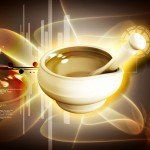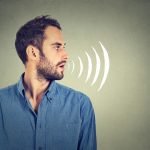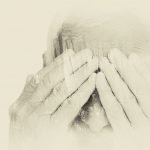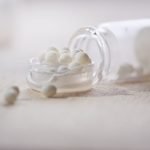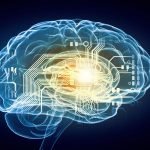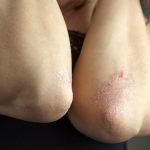Herbal Medicine for Depression Beyond Hypericum
Eric Yarnell, ND, RH(AHG)
The best-researched herbal treatment for patients with mild to moderate depression is undisputedly Hypericum perforatum (St. John’s wort). It is unfortunate that a handful of herbs, such as St. John’s wort, have grabbed headlines and with them almost all the research dollars. Instead of undertaking a campaign to find other herbal antidepressants, there seems to be an obsession with repeating the same trial with the same herb, fighting over minutiae instead of expanding options. Here I will review traditional herbal treatments for depression that either deserve another look empirically or based on greatly overlooked research.
Crocus sativus (saffron)
A research group at the University of Tehran in Iran has published several clinical trials demonstrating the efficacy of saffron in the treatment of patients with mild to moderate major depression. According to written accounts, saffron has been used as medicine for more than 2,700 years. Iran is the largest grower of saffron in the world.
Initial trials used an extract of the stigmata of saffron, the part we are used to using as a spice. In one trial, 30 patients defined by DSM-IV criteria as having major depression with a Hamilton Rating Scale for Depression (HAM-D) score of at least 18, but of mild-to-moderate severity, were given either 30mg of saffron extract or 100mg of imipramine for six weeks (Akhondzadeh et al., 2004). The two treatments were equally effective at lowering HAM-D scores. Imipramine caused significantly more sedation and dry mouth than saffron. In a very similar trial, saffron stigmata extract was significantly more effective at improving HAM-D scores than placebo, with no difference in adverse effects (Akhondzadeh et al., 2005).
To offset the cost of using the stigmata of saffron, which is the most expensive spice in the world (more than 50,000 flowers’ stigmata are used to make one pound of saffron), further trials were conducted using the corolla (flower petals). A double-blind trial in 40 patients with major depression found the petals as more effective than placebo and just as safe (Moshiri et al., 2006). In the most recent trial of all, 30mg daily of the petal extract was just as effective as 20mg of fluoxetine, with no difference in adverse effects (Akhondazdeh et al., 2007).
The extracts used in these trials were percolations of the dried plant part in 80% ethanol, concentrated down and delivered in 10-15mg bid-tid doses. It is unknown how this would compare to a tincture, but suggested dosing of a high-ethanol tincture would be 3-5ml three times per day of the petals or stigmata. There are no known drug interactions or safety issues with saffron. Clearly, these results need to be confirmed by other groups and in larger trials, but saffron is likely to remain an effective treatment for mild depression.
Peganum harmala (Syrian rue) and Pausinystalia yohimbe (yohimbe)
Though not native exclusively to Syria (coming from around the Mediterranean and across Central Asia) and having nothing in common with rue, Peganum harmala is a useful and potent antidepressant that comes to us from traditional medicine (Moore, 1979). The beta-carboline alkaloids harmaline and its congeners are potent alpha-2 adrenergic receptor antagonists, very similar to yohimbine and other alkaloids in Pausinystalia yohimbe bark from Northern Africa (Saleem et al., 2002). Both act pharmacologically to increase catecholamine levels in sympathetic synapses, as the alpha-2 adrenergic receptor largely acts as a reuptake mechanism for these neurotransmitters.
Both herbs are powerful antidepressants. There do not appear to be any clinical trials involving Syrian rue, but yohimbe has been shown to cause patients with major depression to respond more quickly to SSRIs (Sanacora et al., 2004). Yohimbe can also reduce dry mouth and orthostatic hypotension caused by tricyclic antidepressants, and may improve sexual dysfunction associated with these agents, though not all trials have noted this benefit (Lacomblez et al., 1989; Bagheri et al., 1994; Michelson et al., 2002).
Both agents are useful as crude extracts. Using tincture at a 1:5 dilution, 50% ethanol, the initial dose for an average-size adult is 3-5 gtt tid. These agents are contraindicated in hypertension, and patients’ blood pressure should be monitored for two months after initiating therapy to insure it does not become excessive. These agents can also cause arrhythmias, anxiety or even full-blown panic attacks, and are contraindicated in people with anxiety disorders or post-traumatic stress disorder.
Other Herbs
- Echium amoenum (bugloss): An aqueous extract was reportedly more effective than placebo at reducing the HAM-D score (Sayyah et al., 2006). This herb and many related species contain unsaturated pyrrolizidine alkaloids, which are potentially quite hepatotoxic with chronic use.
- Lavandula angustifolia (lavender): 60 gtt qd of a tincture (50% ethanol, 1:5) of lavender was shown to be just as effective as 100mg imipramine for symptoms of mild to moderate depression in a double-blind clinical trial (Akhondzadeh et al., 2003).
- Papaver somniferum (opium poppy): The late RF Weiss, MD reported that he had excellent success using a few drops of opium tincture bid-tid for patients with depression (Weiss, 1985). Due to fears about addiction (which Weiss said would not occur at these doses), he would not tell patients they were taking opium, which is generally not acceptable today. Numerous published case series support the efficacy of this approach (Abse and Dahlstrom, 1960). Clearly, this treatment is of limited availability depending on the scope of practice in your state, and great caution is warranted.
In summary, many herbal treatments other than Hypericum perforatum are available for patients with major depression. These should be further utilized, and utilized in combination, to determine optimal treatment approaches for individual patients.

Eric Yarnell, ND, RH(AHG) is a graduate of Bastyr University. He completed a two-year residency with Silena Heron, ND, and served as chair of botanical medicine at SCNM. He is past senior editor of the Journal of Naturopathic Medicine. Dr. Yarnell is a founding member and current president of the Botanical Medicine Academy and author of numerous textbooks and articles, including Naturopathic Urology and Men’s Health, Naturopathic Gastroenterology and Clinical Botanical Medicine. His area of clinical focus is urology and men’s health. He is assistant professor in botanical medicine at Bastyr University.
References
Abse DW and Dahlstrom WG: The value of chemotherapy in senile mental disturbances, J Am Med Assoc 174:20036-42, 1960.
Akhondzadeh S et al: Comparison of Crocus sativus L. and imipramine in the treatment of mild to moderate depression: A pilot double-blind randomized trial [ISRCTN45683816], BMC Complement Altern Med 4:12, 2004.
Akhondzadeh S et al: Comparison of Lavandula angustifolia Mill tincture and imipramine in the treatment of mild to moderate depression: A double-blind, randomized trial, Prog Neuro-Psychopharmacol Biol Psych 27:123-7, 2003.
Akhondzadeh BA et al: Comparison of petal of Crocus sativus L. and fluoxetine in the treatment of depressed outpatients: A pilot double-blind randomized trial, Prog Neuropsychopharmacol Biol Psychiatry 31(2):439-42, 2007.
Akhondzadeh S et al: Crocus sativus L. in the treatment of mild to moderate depression: A double-blind, randomized and placebo-controlled trial, Phytother Res 19(2):148-51, 2005.
Bagheri H et al: Pharmacokinetic study of yohimbine and its pharmacodynamic effects on salivary secretion in patients treated with tricyclic antidepressants, Br J Clin Pharmacol 37(1):93-6, 1994.
Charney DS et al: Desipramine-yohimbine combination treatment of refractory depression: Implications for the beta-adrenergic receptor hypothesis of antidepressant action, Arch Gen Psychiatry 43:1155-61, 1986.
Lacomblez L et al: Effect of yohimbine on blood pressure in patients with depression and orthostatic hypotension induced by clomipramine, Clin Pharmacol Ther 45(3):241-51, 1989.
Michelson D et al: Mirtazapine, yohimbine or olanzapine augmentation therapy for serotonin reuptake-associated female sexual dysfunction: A randomized, placebo controlled trial, J Psychiatr Res 36(3):147-52, 2002.
Moore M : Medicinal Plants of the Mountain West, Santa Fe, 1979, Museum of New Mexico Press:120-1.
Moshiri E et al: Crocus sativus L. (petal) in the treatment of mild-to-moderate depression: A double-blind, randomized and placebo-controlled trial, Phytomedicine 13(9-10):607-11, 2006.
Saleem A et al: Interaction of folk medicinal plant extracts with human alpha2-adrenoceptor subtypes, Z Naturforsch [C] 57(3-4):332-8, 2002.
Sanacora G et al: Addition of the alpha2-antagonist yohimbine to fluoxetine: Effects on rate of antidepressant response, Neuropsychopharmacology 29(6):1166-71, 2004.
Sayyah M et al: A preliminary randomized double blind clinical trial on the efficacy of aqueous extract of Echium amoenum in the treatment of mild to moderate major depression, Prog Neuropsychopharmacol Biol Psychiatry 30(1):166-9, 2006.
Weiss RF: Herbal Medicine, Gothenburg, Sweden, 1985, Ab Arcanum.




